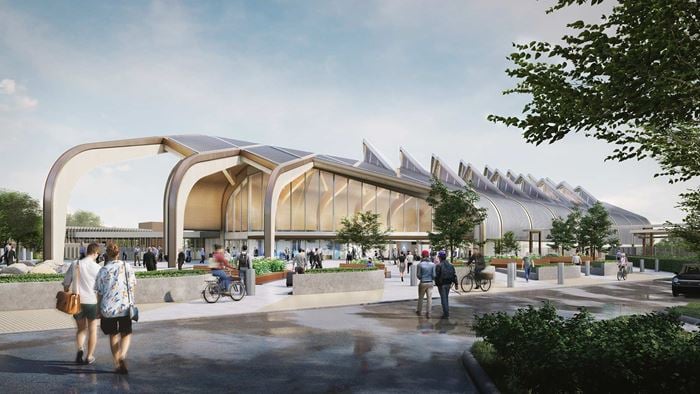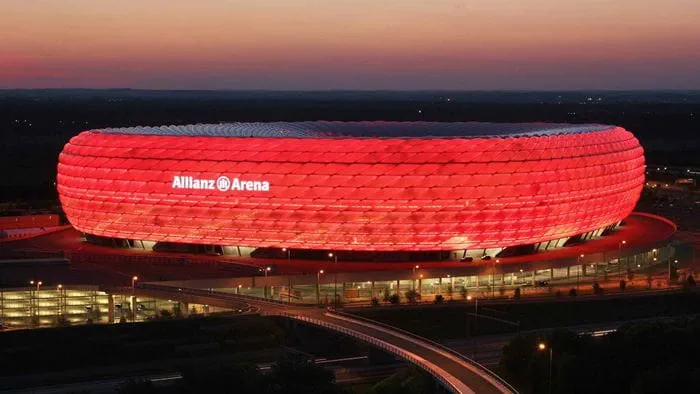We’ve seen recent headlines question the value of spending AU$45m on a World Cup bid and AU$1.3bn on new stadiums in Sydney’s Moore Park and Parramatta. We’ve also seen the counter view that there is inherent value to the community in making such bids and building such facilities.
Even in these times of tight government purse strings, sports spending announced in the federal budget is AU$345m of our hard earned taxes. When combined with state and local governments’ investments, the figure is well into the billions.

“Melbourne sports precinct defines the value of the city as a whole. AAMI Park has a global profile and has grown the soccer code. What is the value of that to the community? Is it measured by the millions of dollars invested at the time, or is it intrinsically worth so much more to the community? ”
Peter Bowtell Australasia Building Design Leader
I disagree with this approach in Australia. The return on government spending to both the economy and the community is easily justified.
In 2013-14, the sports industry generated a massive AU$14.6bn in revenue. But more important than the bottom-line, is the transformative power sport has and the key role it plays in both our urban and rural cities. We have to look at the benefits of these investments on a more holistic basis, not just a financial one.
Sport is a part of our culture and our national psyche. It’s inseparable from community health and well-being. It’s where you learn team behaviours, leadership and so many valuable life skills. Our stadiums and other smaller sports facilities have an opportunity to reflect and embrace this as a key part of our community life.

However, this doesn’t mean we should turn a blind eye to a stadium’s bottom line. This is where smart design and operation can turn a stadium or smaller sports facility from a white elephant to an important part of a city’s identity and global brand.
So, what value does the broader community get from stadiums or major international sporting events? There is a real challenge around commercial drivers and legacy issues behind events like the Olympic and Commonwealth Games but recent experience in cities like London show that you can get this balance right. A holistic view will always consider the legacy outcome. In what ways can this asset add value to communities?
“At the end of the day the answer to all these questions is around the health of communities, our children, and our ability to live together in a harmonious multicultural society ”
Peter Bowtell Australasia Building Design Leader
The winning pitch that underpinned the successful bid for the Singapore Sports Hub was all about community. The Singaporean government recognised that increased participation in sport would be a major driver of community health in Singapore.
At Olympic level, Singapore’s sporting greats hailed from table tennis, weightlifting and swimming. But in line with an increase in funding for elite sports, the city has now grown facilities around athletics, gymnastics, shooting, badminton, and of course football … a whole range of sports to drive the kids off the couch and into the arena. They wanted something that would focus their leisure time and drive the benefits of a healthy community with a strong sports ethic for decades to come, inevitably saving money in the long term.
Australia has been successful at maintaining sports stadiums as places to bring communities together safely. However, affordability is becoming a major challenge as family pricing continues to rise. As ticket prices increase, so too do the expectations of ticket holders. Service and experience delivered have to rise to meet these, and are key reasons why we need to evolve our stadiums over time. Match day has to be better than the ‘in-home’ experience.
Some of the biggest complaints from stadium users stem from simple issues, such as the length of time waiting in the toilet queue at half time. Sports fans may still want to be part of the tribe, but they don’t want match day to feel like an episode of ‘Survivor’.
They are paying large money and expect to be entertained accordingly, with a higher level of facility and amenity, in a family friendly way.
Simple factors, such as comfort, good sight lines, Wi-Fi, convenience, atmosphere, and close proximity to the field of play, and best-in-class team facilities, are all steps to improving experience of the game. They are essential elements of longevity and legacy of stadiums, and vital in order to drag spectators away from their TV’s! Major innovations as extreme as infinity pool hot tubs in corporate suites, and holograms simulating away games on field, could be the next steps to remaining cutting edge and ensuring customer experience.
The best and most successful contemporary stadiums are integrated into the fabric of the communities and they have become innovative, complex and sophisticated multi-purpose buildings, designed to be beautiful, environmentally sensitive and have a high degree of flexibility in future and current use.
The best thing we can encourage though, is healthy children and lifestyles. Sport is a fundamental part of achieving that, and facilities play a vital role.
Many codes wield a larger influence on our community than politicians. They motivate and influence the community at large. We shouldn’t underestimate the power of sport as a unifying body. It is far too simplistic to say these things don’t pay for themselves.

They should be built to the size that feels full on a regular basis
Yes, some fans will miss out and we will eventually need to build new stadiums to meet spectator demand, but full = atmosphere = growth & building on success = longevity.
They must cater for all
Family friendly, latest media facilities, best-in-class player facilities.
They must be connected
Strong wi-fi access for fans to access game specific apps and check wait times for the bathroom queue, or order food from their seat
They need to be flexible in use
A stadium that can be easily converted from one code to another, or to a concert venue, will attract more people, more often.
They must give spectators a feeling of being close to the action
AAMI Stadium is a perfect example of a bespoke stadium and its success has helped to grow a code to unprecedented levels.
They must be comfortable
To drag people off their couch and to the game, a venue needs to be attractive, easy for the spectator to move around and have all weather protection.
 ;
;




